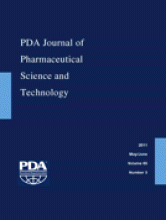Abstract
This review article is a current survey of excipients used in approved injectable products. Information provided includes concentration ranges, function, frequency of use, and role in dosage form. This article is an update of a paper published more than a decade ago (reference 11). Since then many new products have been approved. Safety concerning excipients has evolved as the scientific community continues to learn about their usage. New excipients are being used in early phases of clinical trials to support novel therapeutic entities like RNAi, aptamers, anti-sense, fusion proteins, monoclonal antibodies, and variant scaffolds. Because these excipients are not inert, various pharmacopoeias are responding with monographs or informational chapters addressing excipient functionality. The final sections of this article discuss new excipients, serving specific needs that traditional excipients are unable to provide and for which safety studies are necessary to support a novel excipient for marketing applications.
LAY ABSTRACT: Excipients are added to parenteral dosage forms to serve a variety of functions including stabilization and as vehicles. This review article is a survey of excipients used in approved injectable products. Information provided includes excipient concentrations, functional roles, and frequency of use. This article is an update of an article originally published over a decade ago. Since then new products have been approved and safety concerns have evolved as the scientific community has learned about the usage of excipients. In addition, new excipients are being used in early phases of clinical trials to support novel therapeutic entities such as RNAi, aptamers, anti-sense, fusion proteins, monoclonal antibodies, and variant scaffolds. Because these excipients are not inert, various pharmacopoeias are responding with monographs or informational chapters addressing excipient functionality. The final sections of this article discuss new excipients, serving specific needs that traditional excipients are unable to provide and for which safety studies are necessary to support a novel excipient for marketing applications.
- © PDA, Inc. 2011
PDA members receive access to all articles published in the current year and previous volume year. Institutional subscribers received access to all content. Log in below to receive access to this article if you are either of these.
If you are neither or you are a PDA member trying to access an article outside of your membership license, then you must purchase access to this article (below). If you do not have a username or password for JPST, you will be required to create an account prior to purchasing.
Full issue PDFs are for PDA members only.
Note to pda.org users
The PDA and PDA bookstore websites (www.pda.org and www.pda.org/bookstore) are separate websites from the PDA JPST website. When you first join PDA, your initial UserID and Password are sent to HighWirePress to create your PDA JPST account. Subsequent UserrID and Password changes required at the PDA websites will not pass on to PDA JPST and vice versa. If you forget your PDA JPST UserID and/or Password, you can request help to retrieve UserID and reset Password below.






